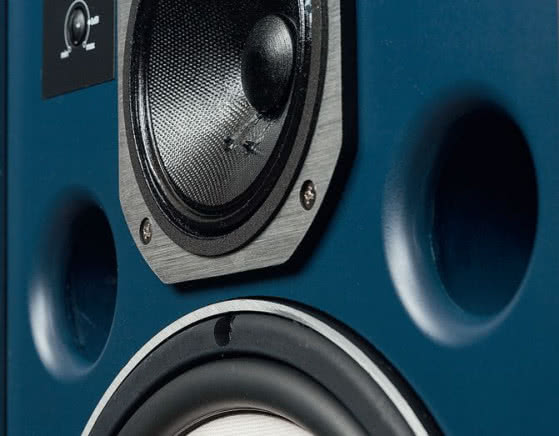Although this thread is about the JBL L100, the Yamaha NS-1000m was a competitor of the original L100 in the 1970's.
...but I am curious if any of you remember Stereophile as being more objective in those days.
According to the Gordon Holt review, Yamaha NS-1000M speakers were the first to use beryllium-dome drivers. Apparently the extreme prejudice against any kind of metallic speaker drivers in those days prevented the acceptance of those Yamaha's by the high-end community of the day.
1)
Stereophile under Holt was not really 'objective' oriented, but could come across that way inasmuch as Gordon was not a tweako goofball. He did try and understand technical arguments, and consider them. He was easy to read, and from everything I gather possessed a rather decent personality, unlike some of the more rabid 'high end' so-called journalists out there, such as well known analog turntable guy, who writes for some of the subjectivist mags from time to time. Holt attempted variable 'controls' into his listening reports. He attempted to standardize things. From a publishing standpoint, the 'problem' with his operation was that it was essentially a one man show, and there was only so much one man with limited finances could do. Current
Stereophile has measurements, the best part of the Website, but they seem to be more of an addition. One really thinks they are happier printing what guy and wife think about an expensive SET amplifier or cable, than making gear measurements.
2) I don't think the NS was a direct competitor to the L100, which was marketed as a home speaker. The Yamaha was more expensive, and back then a lot of people just wouldn't consider a Japanese speaker. I don't recall cross shopping the two. First, I don't recall a Yamaha dealer in my area (whereas JBL had a marked presence), and second, its retail price would have precluded my purse. I understand it was designed for pro work? In the context of a monitor speaker with a 'bookshelf' form factor I guess it could have been a competitor to the JBL 43xx series. I don't know the sales and market stats from those days.
3) The beryllium thing is a question mark for me. Perhaps someone knows how it is used safely? I know Shure claims they stopped using the metal in cantilevers due to its toxic properties. I think this would be in the manufacturing process. Once formed and deposited on the membrane, how could a tweeter poison anyone? For a subjectivist tweako reviewer it might 'poison' the sound... that sort of thing. LOL
Getting back to Gordon and his publication. In those days the only mainstream publication that did a first rate job with loudspeakers was
Audio, Richard Heyser's reviews. And they begain in the mid to late '70s. A lot later than Holt. For example, Julian Hirsch could say that wildly different speakers as the Bose 901, JBL L100, and AR 3a were 'good' speakers. Such a statement could only be made with specific, really very narrow reservations, along with criticisms that
Stereo Review (or
High Fidelity) could (or would) not make. But Gordon Holt could and did. If you wanted to buy an FM tuner the mainstream mags were good sources. If you wanted a speaker,
Audio was the place to go, but you first had to be able to figure out what Heyser was showing you in his measurements. Or, you could read Gordon Holt, who would pretty accurately tell you how it sounded in his living room. Finally, one must consider what gear was reviewed, maybe even more so than what was not. I don't think
Audio ever reviewed the L100, which probably tells you more about their view of the speaker than it would if they had offered a review. Or maybe it was just ad dollars making the call.




